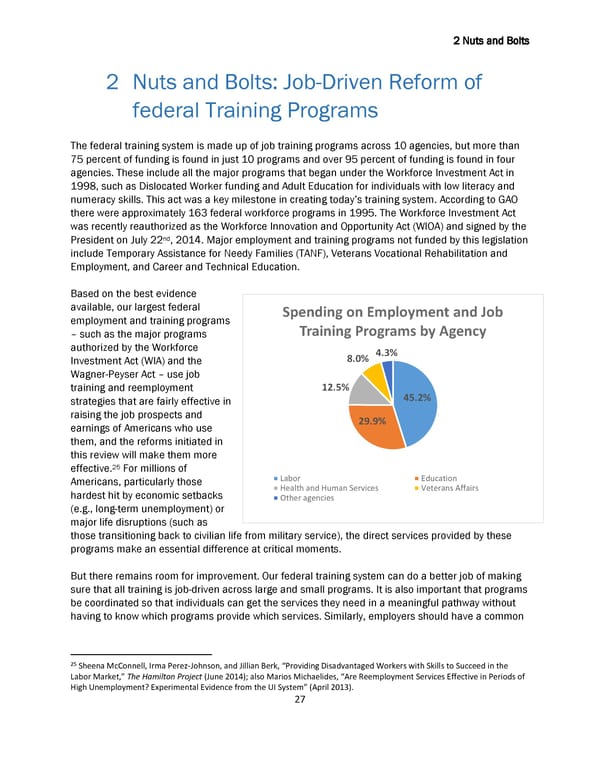2 Nuts and Bolts 2 Nuts and Bolts: Job-Driven Reform of federal Training Programs The federal training system is made up of job training programs across 10 agencies, but more than 75 percent of funding is found in just 10 programs and over 95 percent of funding is found in four agencies. These include all the major programs that began under the Workforce Investment Act in 1998, such as Dislocated Worker funding and Adult Education for individuals with low literacy and numeracy skills. This act was a key milestone in creating today’s training system. According to GAO there were approximately 163 federal workforce programs in 1995. The Workforce Investment Act was recently reauthorized as the Workforce Innovation and Opportunity Act (WIOA) and signed by the President on July 22nd, 2014. Major employment and training programs not funded by this legislation include Temporary Assistance for Needy Families (TANF), Veterans Vocational Rehabilitation and Employment, and Career and Technical Education. Based on the best evidence available, our largest federal Spending on Employment and Job employment and training programs Training Programs by Agency – such as the major programs authorized by the Workforce 4.3% Investment Act (WIA) and the 8.0% Wagner-Peyser Act – use job training and reemployment 12.5% 45.2% strategies that are fairly effective in raising the job prospects and 29.9% earnings of Americans who use them, and the reforms initiated in this review will make them more 25 effective. For millions of Americans, particularly those Labor Education hardest hit by economic setbacks Health and Human Services Veterans Affairs Other agencies (e.g., long-term unemployment) or major life disruptions (such as those transitioning back to civilian life from military service), the direct services provided by these programs make an essential difference at critical moments. But there remains room for improvement. Our federal training system can do a better job of making sure that all training is job-driven across large and small programs. It is also important that programs be coordinated so that individuals can get the services they need in a meaningful pathway without having to know which programs provide which services. Similarly, employers should have a common 25 Sheena McConnell, Irma Perez-Johnson, and Jillian Berk, “Providing Disadvantaged Workers with Skills to Succeed in the Labor Market,” The Hamilton Project (June 2014); also Marios Michaelides, “Are Reemployment Services Effective in Periods of High Unemployment? Experimental Evidence from the UI System” (April 2013). 27
 Biden Ready to Work White Paper 7/22/14 Page 26 Page 28
Biden Ready to Work White Paper 7/22/14 Page 26 Page 28